Arequipa is known as "Ciudad Blanca" or "White City" as so many buildings here are built using the beautiful white stone produced by the local volcanoes. As a result of this it is a very elegant city which is home to one of the most beautiful plazas of all the places I have been to on this trip, although a protest against the local government involving setting fire to various things did taint its beauty a touch. As pretty as they are to look at, the streets and buildings of Arequipa were not the reason I want to visit, I had come here to go for a little walk in the relatively nearby super deep Colca Canyon for a few days. Tom on the other hand fancied climbing a 6,000m+ volcano, something that didn't really appeal to me as I still wasn't feeling 100% and had enough trouble doing any form of exercise at 4,000m!
The first stop on the tour of the canyon was a lookout point to observe condors. In order to arrive here at a good time to view these spectacular birds the bus picked me up at 3.30am for the five hour drive. An uncomfortable bus rattling along the terrible roads is not the easiest place to try and sleep, but I managed to get a bit of shut-eye before we arrived at "Cruz del Condor". I have never seen condors before and found that they are really impressively large animals that soar with such elegance. Against the backdrop of the canyon they were a truly beautiful sight. The only things that dampened this experience a little were the large numbers of loud and annoying middle-aged American tourists, and the array of handicraft stalls in the area. Without either of these things, this would be one of the most beautiful and peaceful spots I've ever visited.
Once we had finished our bird watching, we were loaded back into our minibus. Up until this point I still had not figured out which one of the four guides in the bus belonged to me, or which of the other tourists would be in my group. I got chatting with a really nice Irish/Aussie couple and hoped that I would be with them, however when we arrived at our bus' destination - Cabanaconda - I found out that none of the guides were mine, and the only other people who were also missing their guide were a strange middle-aged Swiss couple. Neither of them could speak English, but at least the woman had a very basic grasp of Spanish so we could communicate with one another. Eventually our guide (Alex) showed up on the public bus and we got underway. First up was a 30 minute walk from the town to the canyon itself on which we didn't see anything too exciting except for one lone snake crossing our path which scared Mrs Swiss half to death.
Upon reaching the canyon Alex pointed out the village on the other side that we would be staying in as well as two others that we would walk through the following day, all of which looked really far away.
With all this walking ahead of me I was very pleased I had packed extremely lightly, especially in comparison to the Swiss couple who had a big backpack weighing about 18kg which Mr Swiss had to carry the whole way. After a little rest we set off on the long walk down to the bottom of the canyon in the blazing sunshine on a path covered in loose stones, which I inevitably slipped/stumbled on a couple of times cutting and bruising myself on the way down, but fortunately no serious injuries were sustained. When we got to the bottom of the canyon we had overtaken all of the other much larger groups as we seemed to be the only ones that did not take a rest... it turns out that these two oldies I was with were walking machines. On the other side of the bridge over the river we had a short walk uphill to reach our resting spot where I got a much-needed early night after a scrumptious dinner of alpaca steak.
The next day was mainly on the flat and took us through the two villages we had seen the previous morning. Along the way Alex stopped and collected a handful of legless insects that live on the cacti here whose blood provide a dye which is very rich in colour and also got used to paint our faces. I have not been to many canyons in my life, but none of those which I have visited have ever had villages within them or such an abundance of fruit trees/other vegetation - to me Colca Canyon is more like a valley than a canyon, although in all honesty I am not really sure what the defining features/differences of these are. In one of the villages we visited a museum where we got to try chica which is the local drink of choice, and we also learnt about the methods the people of the village use to make various things as they have no machinery here and all transportation is done by donkey. Around the back of the museum there were a few cages full of cuy which is a delicacy here in Peru, and better known to me and you as guinea pig. All this was fairly interesting, but more importantly gave me a chance to have a little rest from walking!
After another day of speedy walking we arrived at the Oasis and settled into our next hostel which had a really nice and refreshing swimming pool to relax in for the rest of the day. Shortly after we arrived the couple I had befriended on the minibus from Arequipa showed up so I had lunch with them and got to speak English again after over 24 hours of speaking nothing but Spanish. Following a hard afternoon by the pool and exploring the bottom of the canyon I got another early night ready for the 5.00am departure the next day for the ascent back up to the top.
Mr Swiss had decided that carrying the entire mammoth backpack up the hill would be a bit too much as Alex had told us it was a three hour walk, plus the half an hour back to Cabanaconda, so they hired a donkey to take it up for them who can make the whole journey in just one and a half hours. So, at 5.00am sharp we set off in the darkness climbing back up... at around 6.45 we were at the top already and waiting for Alex to catch up! I'm not sure who the guideline times are for on things like this,
but I wish I could've had an extra hour in bed to arrive at Cabanaconda at the expected hour rather than having to sit around in a ghost town waiting for breakfast to start.
As soon as everyone had been fed and watered in Cabanaconda we started the long drive back to Arequipa, stopping off for a quick lunch where I sampled some rather tasty-but-not-that-meaty cuy before hitting the hot springs to ease our tired muscles. When I got back to the hostel in Arequipa I found Tom about as close to death as I've ever seen a living person after his volcano trip, which made me very glad about my choice to take a gentle walk around the canyon instead. After seeing him I am pretty confident that I will not be taking on any walking that goes over an altitude of 6,000m on this trip!
Una ciudad blanca y un cañón muy verde
Saturday, April 17, 2010
 Arequipa, Peru
Arequipa, Peru
Other Entries
-
27Cancherita toma vino y aprendiendo ser Argentina
Jan 2681 days prior Mendoza, Argentinaphoto_camera10videocam 0comment 5
Mendoza, Argentinaphoto_camera10videocam 0comment 5 -
28Segunda vez en Buenos Aires
Jan 2879 days prior Buenos Aires, Argentinaphoto_camera1videocam 0comment 5
Buenos Aires, Argentinaphoto_camera1videocam 0comment 5 -
29El más exclusivo balneario de Sudamérica
Jan 3176 days prior Punta del Este, Uruguayphoto_camera2videocam 0comment 3
Punta del Este, Uruguayphoto_camera2videocam 0comment 3 -
30Una playa màs tranquila y pequeña
Feb 0274 days prior Punta del Diablo, Uruguayphoto_camera3videocam 0comment 3
Punta del Diablo, Uruguayphoto_camera3videocam 0comment 3 -
31Mi bolsa fue robado... pelotuditos
Feb 0472 days prior Montevideo, Uruguayphoto_camera5videocam 0comment 7
Montevideo, Uruguayphoto_camera5videocam 0comment 7 -
32Colonia pequeña anticuada
Feb 0571 days prior Colonia del Sacramento, Uruguayphoto_camera6videocam 0comment 3
Colonia del Sacramento, Uruguayphoto_camera6videocam 0comment 3 -
33ANT-F*@!ING-ARCTICA... need I say more?
Feb 2254 days prior Antarctica, Antarcticaphoto_camera47videocam 0comment 36
Antarctica, Antarcticaphoto_camera47videocam 0comment 36 -
34Buenos Aires otra vez
Mar 0147 days prior Buenos Aires, Argentinaphoto_camera7videocam 0comment 7
Buenos Aires, Argentinaphoto_camera7videocam 0comment 7 -
35Muchas iglesias y colas, pero no mucho más
Mar 0543 days prior Cordoba, Argentinaphoto_camera13videocam 0comment 16
Cordoba, Argentinaphoto_camera13videocam 0comment 16 -
36Pocas más iglesias y un río lento en Tucumán
Mar 0840 days prior Tucuman, Argentinaphoto_camera7videocam 0comment 8
Tucuman, Argentinaphoto_camera7videocam 0comment 8 -
37Vicki a las nubes
Mar 1335 days prior Salta, Argentinaphoto_camera32videocam 0comment 11
Salta, Argentinaphoto_camera32videocam 0comment 11 -
38Una frontera fácil y uno hermoso paseo del tren
Mar 1533 days prior Tupiza, Boliviaphoto_camera5videocam 0comment 5
Tupiza, Boliviaphoto_camera5videocam 0comment 5 -
39Tanto sal no puede ser buena para su salud
Mar 2028 days prior Uyuni, Boliviaphoto_camera21videocam 0comment 14
Uyuni, Boliviaphoto_camera21videocam 0comment 14 -
40Si amas dinamita y plata, vas a Potosi
Mar 2226 days prior Potosi, Boliviaphoto_camera12videocam 0comment 14
Potosi, Boliviaphoto_camera12videocam 0comment 14 -
41Huelo muchos concursos en el aire (que falta)
Apr 089 days prior La Paz, Boliviaphoto_camera20videocam 0comment 11
La Paz, Boliviaphoto_camera20videocam 0comment 11 -
42Hay abundancia más trucha en el lago
Apr 098 days prior Isla del Sol, Boliviaphoto_camera9videocam 0comment 6
Isla del Sol, Boliviaphoto_camera9videocam 0comment 6 -
43Caña para todas las cosas
Apr 134 days prior Puno, Peruphoto_camera10videocam 0comment 7
Puno, Peruphoto_camera10videocam 0comment 7 -
44Una ciudad blanca y un cañón muy verde
Apr 17 Arequipa, Peruphoto_camera19videocam 0comment 6
Arequipa, Peruphoto_camera19videocam 0comment 6 -
45Mucho caminando, muchas escaleras - vale la pena
Apr 3013 days later Cusco, Peruphoto_camera27videocam 0comment 10
Cusco, Peruphoto_camera27videocam 0comment 10 -
46¿Quién hizo estas líneas?
May 0114 days later Nasca, Peruphoto_camera8videocam 0comment 4
Nasca, Peruphoto_camera8videocam 0comment 4 -
47Mucha arena en mi cara
May 0518 days later Huacachina, Peruphoto_camera19videocam 0comment 7
Huacachina, Peruphoto_camera19videocam 0comment 7 -
48A pesar del cielo gris, tenia que quedar en Lima
May 0922 days later Lima, Peruphoto_camera3videocam 0comment 7
Lima, Peruphoto_camera3videocam 0comment 7 -
49Trabajando duro y jugando más duro en Máncora
Jun 0246 days later Mancora, Peruphoto_camera15videocam 0comment 4
Mancora, Peruphoto_camera15videocam 0comment 4 -
50Quizá con un poco sol Montañita puede ser mejor
Jun 0852 days later Montañita, Ecuadorphoto_camera4videocam 0comment 2
Montañita, Ecuadorphoto_camera4videocam 0comment 2 -
51El origen de las especies
Jun 1559 days later Galapagos Islands, Ecuadorphoto_camera41videocam 0comment 10
Galapagos Islands, Ecuadorphoto_camera41videocam 0comment 10 -
52Muchas aguas en Baños
Jun 2569 days later Banos, Ecuadorphoto_camera14videocam 0comment 3
Banos, Ecuadorphoto_camera14videocam 0comment 3 -
53Oigan chicos, me gustan muchos sus gallos!
Jun 2771 days later Otavalo, Ecuadorphoto_camera14videocam 0comment 5
Otavalo, Ecuadorphoto_camera14videocam 0comment 5 -
54Fui a la Mitad Del Mundo
Jun 3074 days later Quito, Ecuadorphoto_camera22videocam 0comment 2
Quito, Ecuadorphoto_camera22videocam 0comment 2 -
55Pechos y culos falsos, cocaína y la lluvia
Jul 0579 days later Medellin, Colombiaphoto_camera9videocam 0comment 5
Medellin, Colombiaphoto_camera9videocam 0comment 5 -
56El mejor café para el resto del mundo
Jul 0882 days later Manizales, Colombiaphoto_camera8videocam 0comment 3
Manizales, Colombiaphoto_camera8videocam 0comment 3 -
57No sólo para el valiente
Jul 1084 days later Bogota, Colombiaphoto_camera11videocam 0comment 5
Bogota, Colombiaphoto_camera11videocam 0comment 5 -
58En búsqueda de la playa de mis sueños
Jul 2397 days later Taganga, Colombiaphoto_camera22videocam 0comment 2
Taganga, Colombiaphoto_camera22videocam 0comment 2 -
59Infierno de las arañas y lancha por paraíso Caribe
Jul 29103 days later Capurgana, Colombiaphoto_camera18videocam 0comment 9
Capurgana, Colombiaphoto_camera18videocam 0comment 9 -
60La ultima parada en un continente encantador
Aug 05110 days later Cartagena, Colombiaphoto_camera13videocam 0comment 1
Cartagena, Colombiaphoto_camera13videocam 0comment 1 -
61El paraíso recobrado
Aug 09114 days later San Blas, Panamaphoto_camera20videocam 0comment 2
San Blas, Panamaphoto_camera20videocam 0comment 2 -
62Es sólo un canal grande y maloliente
Aug 16121 days later Panama City, Panamaphoto_camera7videocam 0comment 3
Panama City, Panamaphoto_camera7videocam 0comment 3
Comments
2025-05-23
Comment code: Ask author if the code is blank

 Arequipa, Peru
Arequipa, Peru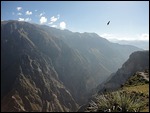
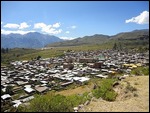
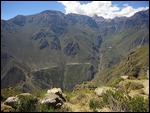
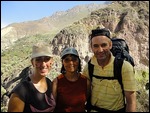
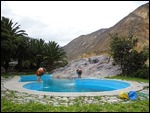
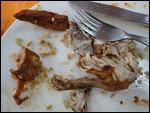








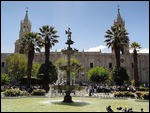

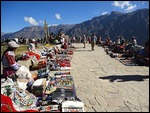
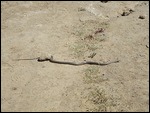
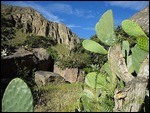
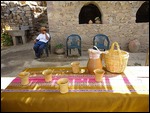
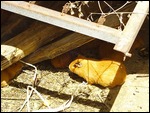
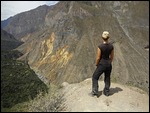
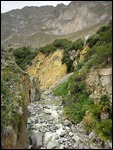
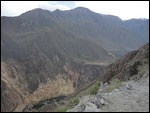
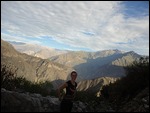


vickismum
2010-05-29
I find it's best to take a photo of a meal before you start rather than half way through. You are certainly willing to try everything (not like when you were small!)
You must be really fit by now with all that walking but maybe the compulsory sampling of the local alchohols minimises the fitness factor?
Love the new make-up.
xxxxxxxxx
vickicooper
2010-05-29
I didn't think to take a picture until I was almost done eating what little meat you get on a guinea pig... apparently it is also quite popular in Ecuador, so if I have another one I'll take a "before" photo just for you. My eating habits have definitely changed a lot since I was younger, but I think I would be ok as you can get spag bol pretty much everywhere - I would just have to check on their mushroom content!
Glad you like the makeup, maybe I could get some of those little bugs and bring them back for you.
mayands
2010-05-30
Ha ha!! Spag bol! I remember!! Who'd have thought it all those years ago that you'd be eating guinea pig!!
x
vickicooper
2010-05-31
Indeed, but after all the weird and wonderful food I've sampled in Africa and Asia guinea pig didn't seem all that odd!
Dad
2010-06-03
Not only did you have a picky palate when you were younger, you couldn't get up in a morning! How things change!